-
You cannot add another "Vermillion Box" to your cart. View cart
-
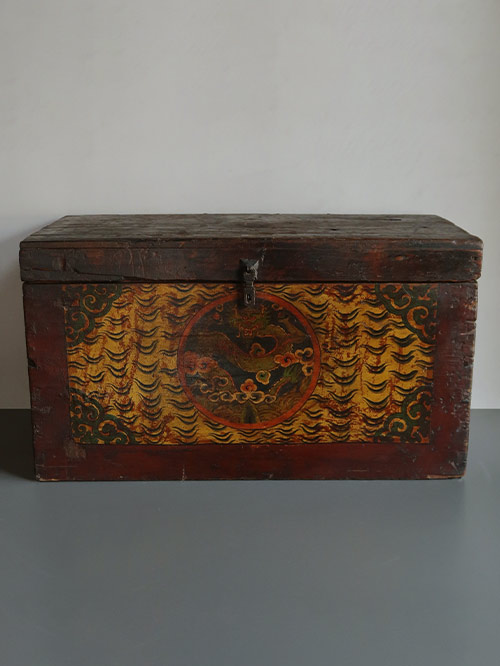
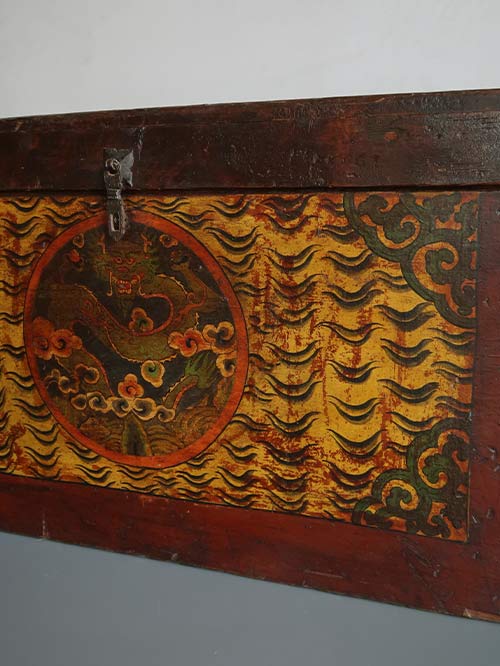
Tibet
Wood, with original polychroming
The chest is decorated in vibrant polychrome pigments with a central roundel enclosing a ferocious writhing dragon grasping a flaming pearl amongst cloud scrolls. The roundel is centred on top of a geometric tiger pattern which is set within cusped corner spandrels.
Tibetan chests and trunks were used as storage in homes and monasteries. Boxes are normally made from cedar, pine, or poplar. If they are painted it is usually just the front and two sides. They can either be painted directly on the wood or on some pieces onto a fabric applied to the wood. The colours and designs used are very decorative. It’s painted with paints mixed from minerals, as was the way during this period, and it will therefore always retain its vibrancy. The sides are decorated with stylised foliate panels.
Size (cms): 47(H) x 88(W) x 48.5(D)
Size (inches): 18.5(H) x 34.5(W) x 19(D)
-
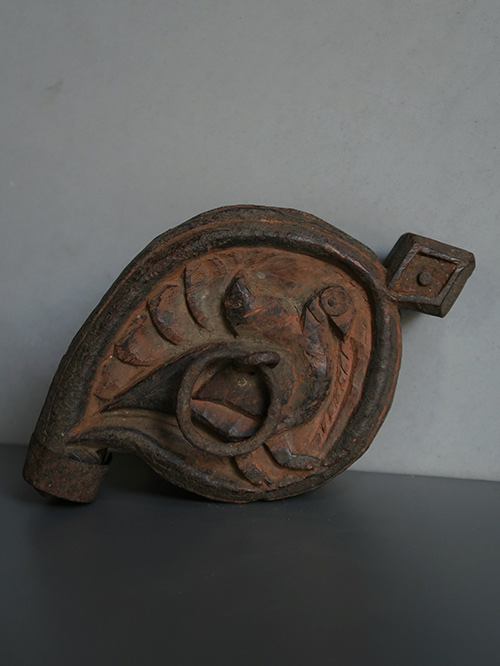
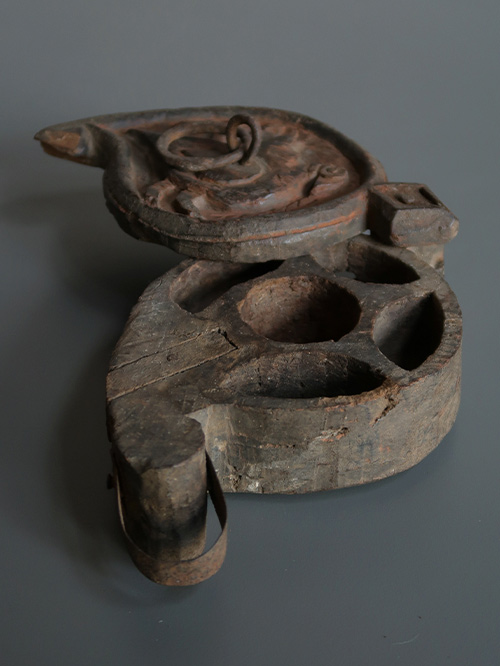
Karnataka (South India)
Wood, polychromed
An unusual vermillion box with a stylised Hamsa (goose) on the lid, and five containers inside.
The hamsa a mythological aquatic bird that resembles a goose or a swan. The hamsa is one of the most important of the Indian birds and is a familiar motif in Indian art, literature, sculpture and textiles. Revered by Hindus, Buddhists and Jains, it plays a prominent role in mythology, folklore, literature and religion. In Vedic times the hamsa was connected with the sun and represented virility. It is reputed to eat pearls and to be able to separate milk from water. The hamsa is the vahana of Brahma.
Sindoor is a traditional vermilion red or orange-red colored cosmetic powder from India, usually worn by married women along the part of their hair. In Hindu communities the use of sindoor indicates a woman is married and ceasing to wear it usually implies widowhood. Sindoor originally comes from the sindoor tree and is used mainly for religious purposes, when worshiping the deity and other Hindu rituals. The main component of modern traditional sindooram is usually turmeric.
Size (cms): 8(H) x 20(W) x 12(D)
Size (inches): 3(H) x 8(W) x 4.5(D)
-
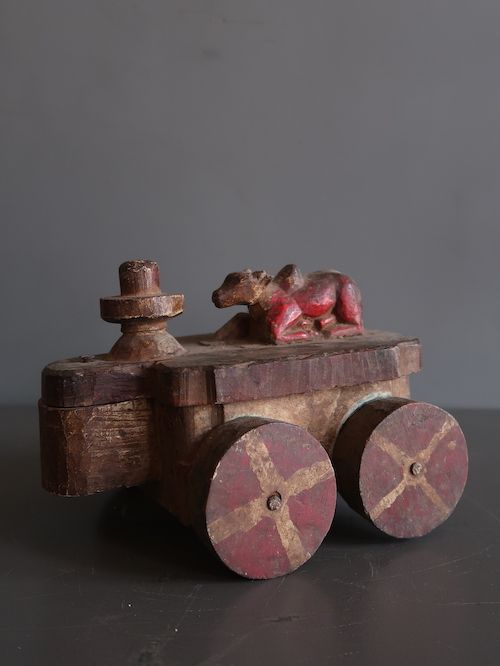
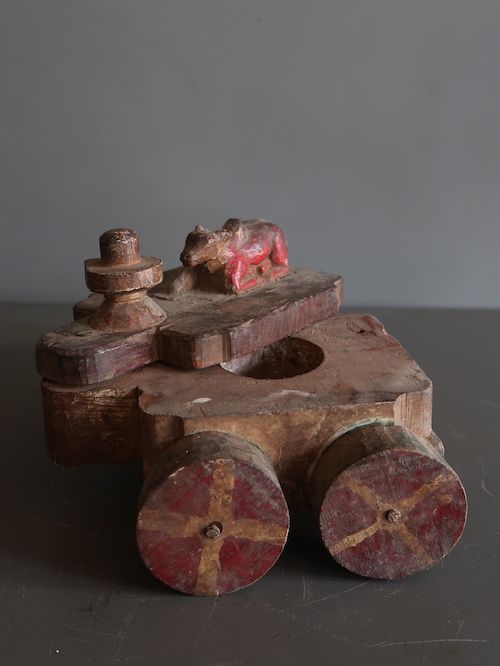
Karnataka (South India)
Wood, polychromed
A rare ash box on wheels with a carved figure of a nandi and a lingam on top. It was used to store Vibhuti. Also referred to as Bhasma (holy ash), Vibhuti is of great significance in Hinduism and especially in Shaivism where it is thought to symbolise the mystic power of Lord Shiva.
Size(cms): 16 (H) x 21.5 (W) x 19 (D)
Size(inches): 6.2 (H) x 8.5 (W) x 7.5 (D)







